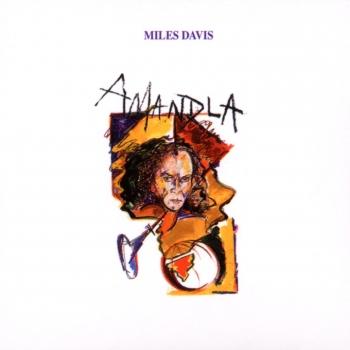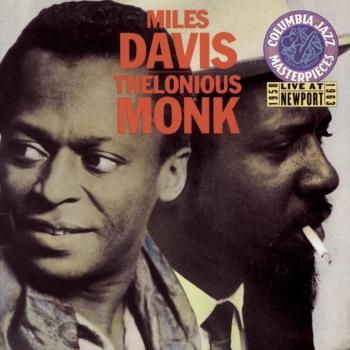
Blue Moods Miles Davis
Album info
Album-Release:
1955
HRA-Release:
07.07.2016
Album including Album cover Booklet (PDF)
I`m sorry!
Dear HIGHRESAUDIO Visitor,
due to territorial constraints and also different releases dates in each country you currently can`t purchase this album. We are updating our release dates twice a week. So, please feel free to check from time-to-time, if the album is available for your country.
We suggest, that you bookmark the album and use our Short List function.
Thank you for your understanding and patience.
Yours sincerely, HIGHRESAUDIO
- 1 Nature Boy 06:17
- 2 Alone Together 07:19
- 3 There's No You 08:08
- 4 Easy Living 05:06
Info for Blue Moods
A short but intensely cool set from a formidable quintet led by Miles Davis and featuring Teddy Charles on vibes, Elvin Jones on drums, Charles Mingus on double bass, and Britt Woodman on trombone. Recorded in 1955 by legendary engineer Rudy Van Gelder at his studio in Hackensack, NJ, Blue Moods is the epitome of '50s cool jazz. A laid-back, introspective set, the tracks ebb and blow as Davis' trademark mellow-tone weaves deftly through Charles' vibe chording, which drifts across the sonic pallet like harmonic clouds. An absolute must-have for fans of the cool jazz genre, Blue Moods is ice cold - an absolute treasure.
„In the '50s, the party line among New York jazz critics was that hard bop was the 'true faith' and that cool jazz was lightweight and unemotional. But Miles Davis knew better. The trumpeter (whose Birth of the Cool sessions of 1949-1950 proved to be incredibly influential) was smart enough to realize that cool jazz and hard bop were equally valid parts of the house that Charlie Parker built, and he had no problem working with cool jazzmen one minute and hard boppers the next. Recorded for Charles Mingus' Debut label in 1955, Blue Moods is an excellent example of cool jazz. However, not all of the musicians who join Davis on this album were full-time members of jazz's cool school. Although vibist Teddy Charles was cool-oriented, Mingus (upright bass) and Elvin Jones (drums) were never considered cool players -- and the lyrical trombonist Britt Woodman was, in the '50s, best known for his association with Duke Ellington. Nonetheless, the things that characterized cool jazz -- subtlety, restraint, and understatement -- characterize Blue Moods. Mingus and Jones were certainly capable of being forceful and aggressive, but you won't hear them being intense on this disc; a very laid-back, gently introspective approach prevails on interpretations of 'Easy Living,' 'Alone Together,' 'Nature Boy,' and 'There's No You.' Clocking in at 27 minutes, Blue Moods is quite skimpy by most standards -- unfortunately, Fantasy didn't have any alternate takes to add. But even so, Blue Moods offers considerable rewards to those who have a taste for '50s cool jazz.“ (Alex Henderson, AMG)
Miles Davis, trumpet
Britt Woodman, trombone
Charles Mingus, double bass
Teddy Charles, vibes
Elvin Jones, drums
Recorded July 9, 1955 at Van Gelder Studio, Hackensack, New Jersey
Digitally remastered
Trumpeter Miles Davis grew up in East St. Louis, Illinois, just across the river from St. Louis, Missouri. His parents were affluent, and had the means to support his musical studies as a boy. He began playing the cornet at age nine, and received his first trumpet at around twelve or thirteen. He studied classical technique, and focused mainly on using a rich, clear tone, something that helped define his sound in later years.
As a teenager, he played in various bands in St. Louis, which was rich with jazz, as big bands often stopped there on tours throughout the Midwest and southern states. The most important experience he had was when he was asked to play in the Billy Eckstine band for a week as a substitute. The group included Charlie Parker, Dizzy Gillespie, and Sara Vaughan. After playing with these stars, Davis knew he had to move to New York to be at the heart of the jazz scene.
In Pursuit of Parker:
In 1944 Davis moved to New York City where he had earned a scholarship to study trumpet at the Juilliard School of Music. Upon arriving however, he sought after Charlie Parker, and meanwhile spent all of his time in jazz clubs listening to bebop. He was transfixed on the music, and grew utterly bored with his classical studies. After less than a year at Juilliard, he dropped out and tried his hand at performing jazz.
Although not particularly stunning, his playing was good enough to finally attract Charlie Parker, and Davis joined his quintet in 1945. He was often criticized for sounding inexperienced, and was compared unfavorably to Dizzy Gillespie and Fats Navarro, who were the leading trumpeters at the time. Both boasted stellar technique and range, neither of which Davis possessed. In spite of this, he made a lasting impression on those who heard him, and his career was soon set aloft.
Cool Jazz and a Rise to Fame:
Encouraged by composer and arranger Gil Evans, Davis formed a group in 1949 that consisted of nine musicians, including Lee Konitz and Gerry Mulligan. The group was larger than most bebop ensembles, and featured more detailed arrangements. The music was characterized by a more subdued mood than earlier styles, and came to be known as cool jazz. In 1949 Davis released the album Birth of the Cool (Captiol Records).
Change of artistic direction became central to Davis’ long and increasingly influential career. After dabbling in hard bop as a leader on four Prestige recordings featuring John Coltrane, he signed with Columbia records and made albums that featured Gil Evans’ arrangements for 19-piece orchestra. These were Miles Ahead, Porgy and Bess, Sketches of Spain, and Quiet Nights. He rose in popularity with these recordings, in part due to his signature sound, which he often enhanced by using a Harmon mute.
Kind of Blue and Beyond:
In 1959 Davis made his pivotal recording, Kind of Blue. It was a departure from all of his previous projects, abandoning complicated melodies for tunes that were sometimes only composed of two chords. This style became known as modal jazz, and it allows the soloist expressive freedom since he does not have to negotiate complex harmonies. Kind of Blue also featured John Coltrane, Cannonball Adderley, and Bill Evans. The album is one of the most influential in jazz, and is Columbia Records’ best-selling jazz record of all time.
In the mid 1960s Davis changed directions again, forming a group with Herbie Hancock, Wayne Shorter, Tony Williams, and Ron Carter. This group was known for the excellence of each individual member, and also for its unique performance approach. Each night the tunes would sound different, as the musicians would sometimes only loosely adhere to the song structures, and often transition from one right into the next. Each player was given the chance to develop his solos extensively. Like all of Davis’ previous groups, this quintet was highly influential.
Late Career:
Despite health problems, drug addiction, and strained personal relationships, Davis continued to play, changing his approach with each new project. In the late 60s and 70s, he began to experiment with electronic instruments, and grooves that were tinged with rock and funk music. Two famous recordings from this period are In a Silent Way and Bitches Brew. By the time the 1980s rolled around, Davis was not only a jazz legacy, but a pop icon, whose music, persona, and fashion style were legendary.
Davis died in 1991, as perhaps the most influential jazz artist ever. His vast body of work continues to be a source of inspiration for today’s musicians. (Jacob Teichroew, About.com Guide)
Booklet for Blue Moods






































